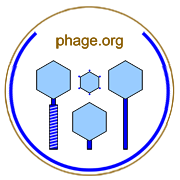

A bacterium's ability to support a phage infection.
Alternatively…
The number of phage adsorptions that the surface of a bacterial cell can support.
Phage infections are limited by a combination of phage characteristics, bacterial genotype, bacterial phenotype, and related environmental considerations.
The absorption capacity of a bacterium is a function of a combination of the number of phage receptors present on a bacterium’s surface, the radius of the virus particles, and the size (surface area) of bacterial cells.
Bacteria that are unable to support a phage infection may or may not be able to survive the attempt. If both phage and bacterium die, then one can described the infection as abortive whereas if only the bacterium dies then I prefer to use the term, restrictive (or restriction). Thus, for both restrictive and abortive infections the bacterium's capacity to support a phage infection has been reduced to zero.
This is the definition from Adams (1959), p. 439): "The ability of a bacterium to support growth of phage when infected. Thus one speaks of the capacity of a bacterial culture varying with the dose of ultraviolet light administered to it before infection. To preserve the usefulness of the term, it should not be used to describe the effects of treatment applied after infection."
For more on this topic, see Wikipedia, Google, and PubMed. Contact web master. Return to terms.